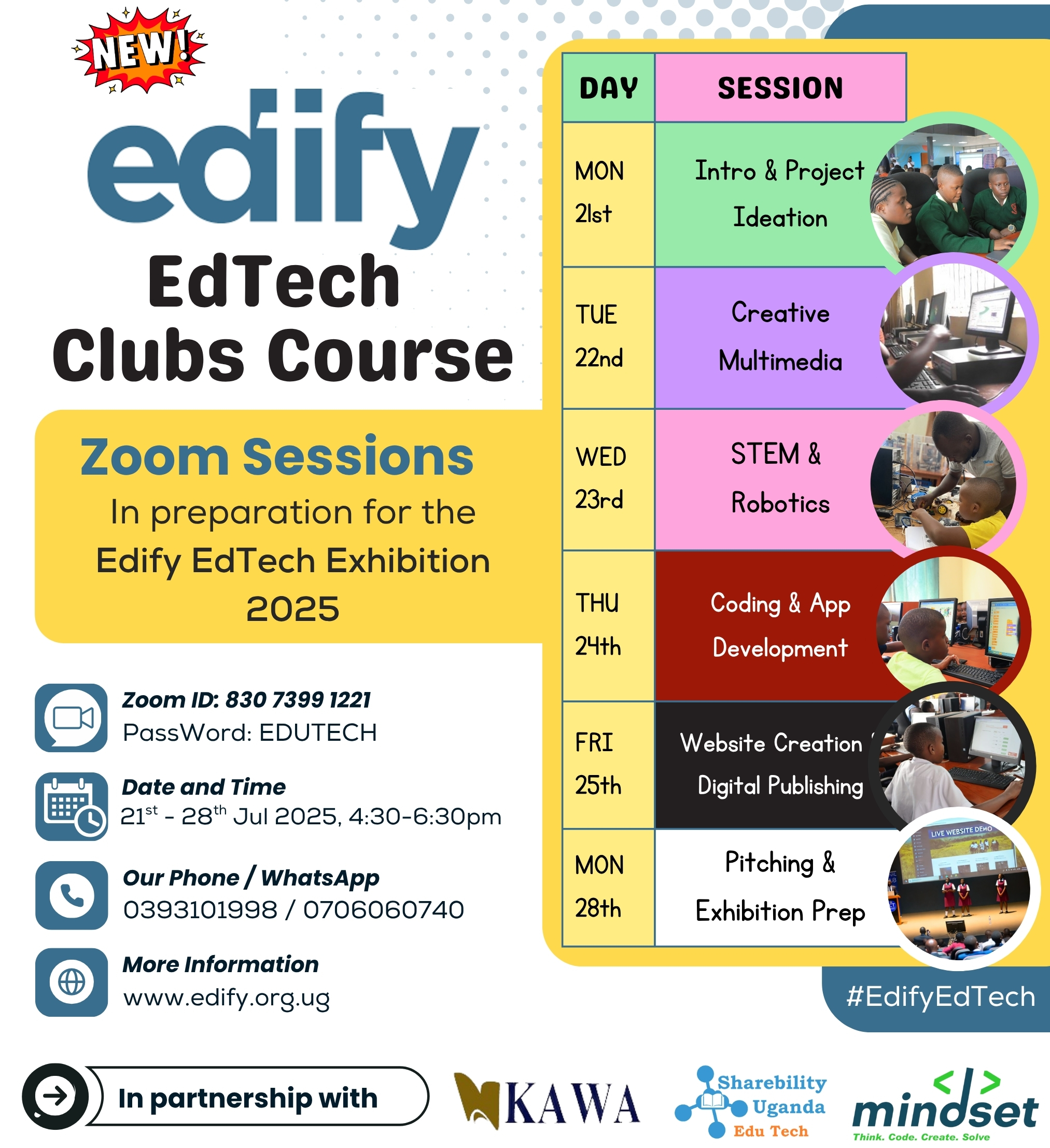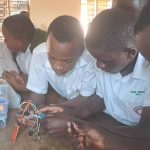The third session of the Edify EdTech Clubs Course introduced patrons and facilitators to the fascinating world of STEM and Robotics. This category empowers learners to explore science, technology, engineering, and mathematics by building interactive models, simple machines, and problem-solving prototypes. Through robotics, students learn how to connect classroom theory with real-world applications — a skill set that will prepare them for the future.
Purpose of the Session
This session was designed to help club patrons mentor learners in designing projects that:
- Integrate STEM principles into hands-on learning.
- Apply robotics to solve real-life challenges.
- Encourage creativity, teamwork, and innovation.
- Align with the new competence-based curriculum in Uganda, which emphasizes ICT integration across subjects.
Key Learning Areas
3.1. Introduction to STEM & Robotics
- STEM is an interdisciplinary approach combining science, technology, engineering, and math to solve problems.
- Robotics involves designing, constructing, and operating robots — programmable machines that can perform tasks autonomously or semi-autonomously.
- Why it matters: Robotics engages learners, fosters creativity, and develops critical problem-solving skills while preparing students for future careers in technology and engineering.
3.2. Problem-Solving with Robotics
Robotics was presented as a powerful method for tackling real-world challenges. Patrons were guided through a four-step process to support learners:
- Identify the Problem – Define the challenge to solve.
- Design the Solution – Plan how a robot can address the problem using sensors, motors, and controllers.
- Build the Robot – Assemble components such as sensors, actuators, and motors.
- Test and Refine – Program the robot, evaluate performance, and improve the design.
Learners can design robots to handle tasks that are repetitive, dangerous, or complex, thereby boosting efficiency and safety.
3.3. Safety in Handling Electronics
Safety was emphasized as a non-negotiable priority in robotics projects. Patrons were reminded to:
- Set up a clean and organized workspace.
- Store tools and components safely.
- Avoid short circuits and exposed wires.
- Handle sensitive parts (capacitors, batteries) with care.
- Wear safety gear like goggles and gloves.
- Always disconnect power before adjusting circuits.
These practices protect both students and equipment, while modeling responsibility and stewardship.
3.4. Sample Robotics & ICT Projects
The session showcased examples of projects aligned with the Ugandan Secondary Curriculum, which integrates ICT in multiple subjects. Schools such as St. Andrew Kaggwa, Ndejje SS, Namungo Seed, Kibuli SS, Trinity College, and Comboni College were highlighted as active participants.
Examples of robotics and ICT integration projects include:
- Automated systems for agriculture or waste management.
- Science simulations with sensors.
- Simple robotic arms or moving vehicles.
Skills Emphasized
- Problem-Solving: Breaking down challenges into designable solutions.
- Critical Thinking: Evaluating and refining projects through testing.
- Teamwork: Dividing roles for efficiency and smooth project flow.
- Technical Skills: Programming, wiring, and system integration.
Summary & Next Steps
Session 3 reinforced that STEM and Robotics are not just technical exercises, but a way to nurture innovative thinkers and practical problem-solvers.
Next Steps for Clubs:
- Begin brainstorming a robotics project that addresses a real problem in your community.
- Assign clear roles within teams (e.g., design, assembly, programming).
- Follow safety guidelines strictly when handling electronics.
- Document the design and testing process as part of your exhibition submission.
With robotics and STEM education, learners can imagine and create solutions that make life safer, smarter, and more efficient — while strengthening their capacity as future innovators.







Leave a Reply